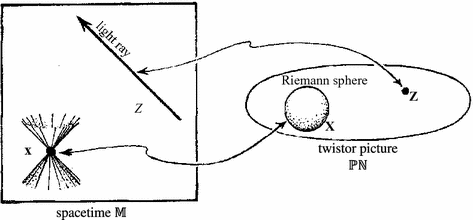For quite a while Leonard Susskind has been giving some wonderful courses on physics under the name “The Theoretical Minimum”, pitched at a level in between typical popularizations and standard advanced undergraduate courses. This is a great idea, since there is not much else of this kind, while lots of people inspired by a popular book could use something more serious to start learning what is really going on. The courses are available as Youtube lectures here.
Book versions of some of the courses have now appeared, first one (in collaboration with George Hrabovsky) about classical mechanics, then one (with Art Friedman) about quantum mechanics. I wrote a little bit about these here and here, thought they were very well done. When last in Paris I noticed that there’s now a French version of these two books (with a blurb from me for the quantum mechanics one).
The third book in the series (also with Art Friedman) is about to appear. It’s entitled Special Relativity and Classical Field Theory, and is in much the same successful style as the first two books. Robert Crease has a detailed and very positive review in Nature which does a good job of explaining what’s in the book and which I’d mostly agree with.
The basic concept of the book is to cover special relativity and electromagnetism together, getting to the point of understanding the behavior of electric and magnetic fields under Lorentz transformations, and the Lorentz invariance properties of Maxwell’s equation. Along the way, there’s quite a lot of the usual sort of discussion of special relativity in terms of understanding what happens as you change reference frame, a lot of detailed working out of gymnastics with tensors, and some discussion in the Lagrangian language of the Klein-Gordon equation as a simpler case of a (classical) relativistic field theory than the Maxwell theory. Much of what is covered is clearly overkill if you just want to understand E and M, but undoubtedly is motivated by his desire to go on to general relativity in the next volume in this series.
At various points along the way, the book provides a much more detailed and leisurely explanation of crucial topics that a typical textbook would cover all too quickly. This should be very helpful for students (perhaps the majority?) who have trouble following what’s going on in their textbooks or course due to not enough detail or motivation. Besides non-traditional students in a course of self-study, the book may be quite useful for conventional students as a supplement to their textbook.
One of the most annoying things someone can do while reviewing a book is to start going on about their own different take on the material, criticizing the author for not writing a very different book. So, the rest of this posting is no longer a review of the book, it’s now about the very different topic of what I think about this material, nothing to do with Susskind’s valuable and different approach.
This semester I’m teaching a graduate level course on geometry, and by chance the past week have been discussing exactly some of the same material about tensor fields that Susskind covers. The perspective is quite different, starting with trying to explain a coordinate-invariant point of view on what these things are, only then getting to the formalism Susskind discusses. I can’t help thinking that, with all the effort Susskind (and pretty much every other physics textbook…) devotes to endless gymnastics with tensors in coordinates, they could instead be providing an understanding of the geometry behind this story. It’s unfortunate that many if not most of those who study this material in physics don’t ever get exposed to this point of view. Thinking in geometrical terms, the vector potential and field strength have relatively simple interpretations, and using differential forms the equations needed for the part of E and M Susskind covers are pretty much just:
F=dA, dF=0, and d*F=*J
Similarly, for the special relativity material, there’s a danger of the basic simplicity of the story getting lost in calculations of how things appear in coordinates with respect to different reference frames. What you fundamentally need is mainly that objects are described by a (conserved in the absence of forces) energy-momentum p, which satisfies p2= -m2, with Lorentz transformations taking one such p to another. The wider principle is that things are described by solutions to wave equations, with special relativity saying that the Lorentz group takes solutions to solutions.
I’d like to believe that such a very different course and very different book would be possible, quite possibly am very wrong (I’ve never taught special relativity to anyone). Maybe some day someone, inspired by Susskind’s project, might try to do something at a similar level, but from a more geometric point of view.


